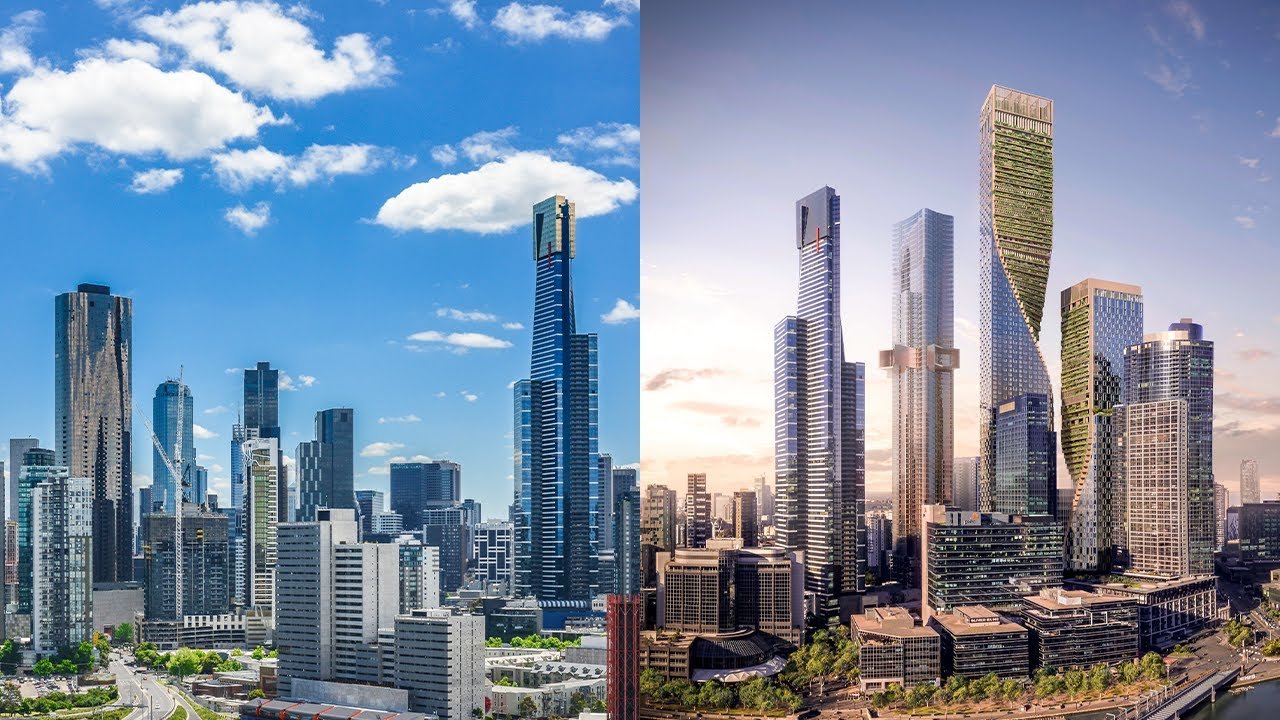skyscrapers: Tall building design trends
- By -Peter
- Posted on
- Posted in Modern Architecture
Skyscrapers have evolved beyond mere architectural icons to serve as sustainable, efficient, and technologically advanced hubs in urban environments. Here’s an exploration of the innovative trends shaping the future of skyscraper design.
1. Sustainable Skyscrapers
Green Building Practices:
- Energy Efficiency: Incorporating passive design strategies, solar panels, and green roofs to minimize energy consumption and environmental impact.
- Material Innovation: Using sustainable and recycled materials in construction to reduce carbon footprint and promote resource conservation.
2. Biophilic Design Integration
Connecting with Nature:
- Green Spaces: Introducing vertical gardens, sky parks, and indoor greenery to enhance air quality, biodiversity, and occupant well-being.
- Natural Light: Maximizing daylight penetration through innovative facade designs and interior layouts to reduce artificial lighting needs.
3. Technological Integration

Smart Skyscrapers:
- IoT (Internet of Things): Implementing sensor networks and automation systems to optimize building operations, energy management, and user experience.
- Responsive Facades: Using adaptive shading, dynamic glass, and climate-responsive materials to regulate internal temperature and improve comfort.
4. Structural Innovation
Advanced Engineering:
- Tall Timber Buildings: Embracing mass timber and engineered wood products for sustainable and aesthetically pleasing high-rise construction.
- Seismic Resilience: Designing skyscrapers with advanced seismic technologies and damping systems to withstand earthquakes and enhance structural safety.
5. Mixed-Use Developments
Urban Integration:
- Vertical Communities: Creating multifunctional spaces that combine residential, commercial, and recreational amenities to foster vibrant urban neighborhoods.
- Sky Bridges and Connectivity: Enhancing pedestrian connectivity and accessibility between skyscrapers through elevated walkways and sky bridges.
6. Iconic Architecture and Aesthetic Trends
Unique Designs:
- Parametric Design: Utilizing computational tools and digital fabrication techniques to create complex, organic forms and iconic skyscraper silhouettes.
- Cultural Inspiration: Incorporating local heritage, art, and cultural motifs into skyscraper designs to reflect regional identity and community pride.
7. Resilience and Adaptability
Future-Proofing Skyscrapers:
- Climate Adaptation: Designing buildings with climate-responsive features and adaptive strategies to mitigate environmental risks and future-proof against climate change.
- Modular and Prefabricated Construction: Utilizing off-site manufacturing and modular construction methods to enhance construction efficiency and adaptability.
8. Economic and Social Impact
Urban Dynamics:
- Economic Catalysts: Serving as landmarks and economic engines that attract investment, tourism, and business activity to urban centers.
- Social Spaces: Designing inclusive and accessible public spaces within skyscrapers to promote community engagement and social interaction.
9. Challenges and Innovations
Overcoming Obstacles:
- Regulatory Compliance: Navigating stringent building codes and zoning regulations to ensure safety, sustainability, and compliance with local laws.
- Public Perception: Addressing concerns about skyscraper development, including environmental impact, urban density, and skyline aesthetics.
10. Future Visions for Skyscrapers
Forward-Thinking Designs:
- Vertical Farming: Integrating agriculture and food production within skyscrapers to enhance food security and sustainability in urban settings.
- Off-World Construction: Exploring possibilities for skyscraper-like structures on other planets or in space habitats as humanity ventures beyond Earth.
Conclusion
The future of skyscrapers lies at the intersection of sustainability, technology, and innovative design. By embracing green building practices, biophilic design, smart technologies, and advanced engineering solutions, architects can create skyscrapers that not only redefine urban landscapes but also enhance environmental stewardship, user experience, and community well-being. As cities continue to grow vertically, skyscrapers will play a pivotal role in shaping sustainable and resilient urban environments for generations to come



